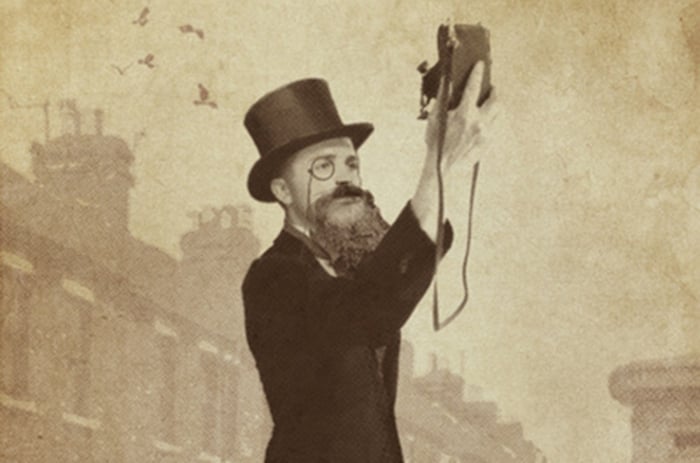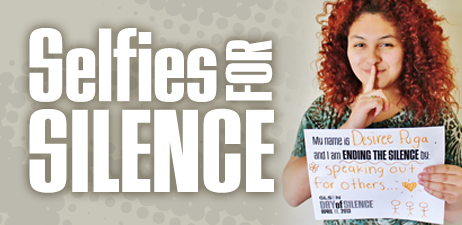Right now, there are more than 274 million photos on Instagram that fall under the hashtag of #selfie. Not to mention other hashtags like #selfienation (5 million), #selfiesunday (9 million), and #selfies (16 million).
As the numbers of selfies increase and the creation of the selfie stick has come into existence, it’s hard to ignore what selfies may actually mean when people decide to post them to various sites. Selfies have gained traction by being known for increasing self-love, creating a positive self-image, and an increased self-esteem.
We’re providing more evidence about why you should be incorporating and supporting intentional #selfies into programming and possibly courses as they become increasingly popular among the modern college student.
The History of the Selfie
Selfies aren’t a new thing.
Selfies have become increasingly popular in the past few years, specifically in 2013 when the Oxford Dictionary claimed ‘selfie’ as the International Word of the Year. According to Oxford Dictionaries, a selfie is,
“a photograph that one has taken of oneself, typically one taken with a smartphone or a webcam and uploaded to a social media website.”
Simply put: selfies are a self-portrait.
In 2005, urbandictionary.com officially added selfie to their website after the rise and fall of MySpace and the beginning of the selfie on Facebook.
Researchers even trace back selfies as far as 1839 when Robert Cornelius, an amateur photographer, took the earliest photographic selfie recorded. The story goes like this: in order for Robert to take the photograph, he put the film in his camera, removed the lens cap, sat back and remained perfectly still for sixty seconds, and then replaced the lens cap. He processed the film (with chemicals and dried it) and created the first photographic selfie.

picture from nymediacenter.com
Today, selfies have been incorporated into our culture after MySpace (taking pictures in mirrors with digital cameras), the creation of the front facing camera, and finally the creation of the selfie stick with group selfies becoming more trendy.
The Study of the Selfie
According to a psychologist from Time Magazine, selfies are becoming more of an outlet for self-expression, while older generations seem to think it’s a form of narcissism among younger generations. Selfies tend to capture the moods of people and meaningful experiences. When these pictures of moods, outfits, poses, or different variations of makeup and facial expressions are shared, people connect deeply through a digital world to make meaning of their experiences in real life.
Taking a selfie is viewed as more intimate because someone else isn’t taking the photo. Sharing it with followers and friends often validates and shows followers or friends a particular mood or life event.
Katie Warfield, explains her TEDxTalk called The Treachery and Authenticity of Images that cameras are powerful tools in that when we create selfies with them, cameras create authentic representations of people.
She discusses the how selfies work: we snap a picture, look at it and reflect on it, curate and assess, and repeat until we’re satisfied with the photo. Once a selfie is posted online, that person who posted the picture approves of how their image is being perceived by others. Katie states in her talk,
“Selfies are the most authentic visual image of a person today”
In our research of articles and studies, people are studying selfies all over the world. Selfiecity.net is a project led by a team of people who study selfies from major cities to investigate a city’s “selfiescape”. The team breaks down findings based on selfies through interactive data visualizations (called imageplots) which can include anything from smiling, frowning, to what else may be featured in their photos.
Psychologists are contextualizing selfies to make meaning of things like a city’s culture, diversity representation, and how people interact with others.
Encourage Identity Exploration Among Students
Selfies can be influential in molding college students sense of self. Taking a selfie facilitates the ability to self-identify and encourages self-exploration that adds a narrative to students’ lives through pictures (and words). They allow for identity development and enable how others see an individual. The selfie is now defined as a social tool that provides everyone a chance to control their identity online and contribute to their in-person identity.
When college students meet each other, they often find each other on sites like Facebook, Twitter, and Instagram to make their friendship “Facebook official”.
According to Dr. Pamela Rutledge, Director of the Media Psychology Research Center,
“Humans have long demonstrated an interest in self-exploration. From early Greeks to present day, people have used self-study and self-observation to explore identity and sense of self.”
As incoming digital natives, college students that have grown up with technology, experience sharing pictures online to show authenticity and transparency. In this way, they reinforce social identities that we want other people to perceive us to be. “Images interact differently with the brain,” states Pamela. She explains that images represent experiences. When humans look at old photos, emotions resurface and gain insight differently than just text.
Incorporate Selfies Into Programs & Practices to Boost Engagement
Both USC and UCLA offer classes on #selfies.
Professor Mark Marino at the University of Southern California takes a serious view at selfies as an expression of self-identity in his #SelfieClass, Writing 150: Writing and Critical Reasoning: Identity and Diversity.
Rival university, University of California Los Angeles offers a course called Selfies, Snapchat & Cyberbullies: Coming of Age Online. Professor Miriam Posner explains that dozens of academics all over the world are taking a critical look at the selfie. She speaks about selfies in the context of diversity and racial identity in her course. In her course, her goal is to “develop a vocabular for talking about cultural change that accommodates the diversity and contingency of human experience.”
Outside of course curricula, apply the knowledge of selfies to students you’re working with.
For example, the Gay, Lesbian, & Straight Education Network (GLSEN) created the Selfies for Silence campaign. This campaign incorporates identity and creating awareness to end the silence around anti-LGBT bullying and harassment.

picture from glsen.org
This national student-led event focuses on anti-LGBT issues that take place from middle school to college. Students take a vow of silence to spread awareness of bullying and harassment of LGBT identified students and those perceived to be LGBT. To make this event successful in both schools and college campuses, students discuss their intentions of the program with faculty and administrators before the campaign commences. The GLSEN advises middle school, high school, and college students to gain permission in an effort to create safe spaces within schools for all students.
The campaign intentionally creates an online and in-person safe space by making this LGBT campaign popular. Students generally log on to see their “selfie” picture from the event and make it their profile picture on numerous websites. Through this awareness campaign, students come together to show how they care about LGBT issues and ultimately make new connections both online and in-person with the student community.
A Picture is Worth A Thousand Words
… As the old saying goes.
Selfies are shaping younger generations self-perception and diversifying how we communicate. Pictures provided at events and programs on campuses often create meaningful moments for students. Through intentional design, we can connect students via social media and connect them through taking pictures and creating memories.
At your next program, brainstorm ideas with students on how to incorporate selfies: create a selfie mirror, incorporate instagram cardboard cutouts (like Valencia College’s Instagram cutout above), or make food specifically for an event students can take pictures with – host a selfie competition! The ideas are endless for using selfies to boost engagement.
What insights can we gather from selfies on our campuses?
What can we learn as educators about popular pictures or trends we see in pictures on our campus hashtags?
Have you or your colleagues programmed around #selfies before?
Share your ideas and programs with us @CheckImHere!
References
Rutledge, P. (2013). #selfies: narcissism or self-exploration? https://www.psychologytoday.com/blog/positively-media/201304/selfies-narcissism-or-self-exploration.
Stinson, L. (2014). Fantastic infographics, drawn from a study of instagram selfies. https://www.wired.com/2014/02/explore-world-selfies-new-data-visualization-tool.





